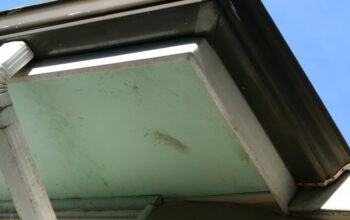Unless you live in some alternate dimension where homes never need fixing, most home inspections reveal issues. Home inspectors often go places that buyers won’t (like the roof, crawl space, and attic).
They check for things like sagging ceilings, water damage in walls, and moldy flooring. But what about those ‘Uncle Bob’ repairs that might violate building codes? Visit https://www.axioshomeinspections.com/ to learn more.

Plumbing
Plumbing issues are a common home inspection problem found in many houses. From a minor issue like a leaking faucet to a more serious issue like a clogged sewer line, these problems can lead to costly damages. Inspectors typically check for leaking water hoses under sinks, rusty pipes, and leaky water heaters. They will also look at the plumbing piping throughout the house, including septic tanks and wells. If a house has Polybutylene pipes, it’s important to know that these were used in the ’80s and ’90s and are now banned due to their high risk of leaking.
Most of the time, a plumbing problem is not immediately noticeable. This is why it’s so important to regularly maintain your home and do a pre-home inspection before placing your property on the market. This will help you identify any small plumbing issues and fix them before they become larger problems.
Leaking water pipes are a major issue found in homes and can cause damage to drywall and flooring and encourage the growth of mold or mildew. It is also important to look out for clogs, especially in showers and toilets. Clogs are typically caused by hair, toothpaste, and soap scum buildup and can be easily fixed with a drain cleaner.
Inspectors will look at your fuse box and ensure that all switches are labeled and covers are in place to prevent a fire hazard. They will also check for frayed insulation, DIY wiring, and mismatched wires. Over 51,000 home fires occur each year due to electrical problems. Home inspections can identify problems with smoke detectors and carbon monoxide sensors. These issues can be fixed by the homeowner or seller before the house goes on the market.
Electrical
Home inspections often uncover electrical issues that pose serious safety hazards. These include exposed wiring, outdated systems, and faulty receptacles.
Most electrical problems are found in older homes and can be a fire risk or a danger to people who live in the house. They can also pose a threat to people who try to make home repairs. These types of issues usually require the services of a professional electrician.
Some of the most common electrical issues discovered during home inspections include:
Outlets that have reverse polarity. This happens when a neutral wire is connected where the hot wire should be. This can cause electricity to flow through the outlet even when it is turned off.
Overloaded circuits. When a circuit is overloaded, it can lead to burning out of components or shorting out wiring. This can be dangerous and should be fixed by a licensed electrician.
Knob and tube wiring. This type of wiring does not have a grounding wire and can be extremely dangerous, especially in older houses. It should be replaced with modern wiring to reduce the risk of fire and electric shock.
Faulty breakers. These may be tripping frequently because they aren’t designed for the electrical needs of modern appliances. They may also have insufficient amperage to handle the load of modern appliances.
Wires exposed to sharp metal edges. This could be caused by loose mounting screws or lack of a proper bushing or wire clamp holding the wires in place. This is a danger to people who work on the wiring and can lead to abrasions.
Home inspectors can’t catch every problem that might be found in a house’s electrical system because most of it is hidden behind walls and ceilings. Additionally, they are prohibited from opening up walls and can’t look inside junction boxes. This is why people need to hire a certified electrician to do electrical inspections before they buy a new house and have any problems repaired.
Heating And Cooling
If the home inspector discovers a problem with a house’s HVAC system, they’ll likely take a close look at the unit itself as well as its components. Inspectors will check the air filters, fan belts, evaporator coils, and condensate drain lines to make sure everything’s in good working order. They’ll also look for leaks, signs of pest infestations, and wood-destroying insects like termites and carpenter ants.
Leaks are a common reason for homes to fail inspections. Left untreated, they can damage walls, floors, and ceilings, and even lead to mold. A home inspector will check for water stains, wet spots, and sagging floors near plumbing fixtures to see if they indicate a leak. They’ll also look for corroded pipes and evidence of do-it-yourself repairs or modifications, such as a leaking shower faucet or clogged toilet drain.
Electrical issues are another common cause of a home to fail a home inspection. Inspectors will carefully examine outlets, switches, and wiring for potential problems like frayed insulation, do-it-yourself wiring, and multiple wires using the same breaker. A house with faulty wiring is a serious safety concern that requires immediate attention.
In many cases, if the home inspector finds a lot of items that need to be fixed, buyers can negotiate with sellers to help pay for those fixes before closing on the house. Depending on the circumstances, such as a seller’s market and the size of the repair bill, buyers may be able to barter with the seller for other items like appliances or furniture. If a seller refuses to agree to fix any of the home inspection findings, buyers can walk away or hire a professional to remedy the issue before they move in.
Attic
A home’s attic is much more than a place to store junk. It’s a critical component of the roof system, offering ventilation and insulation. A thorough attic inspection is a great way to spot problems before they escalate. Inspectors look for structural issues such as bowed or warped beams and rafters. This damage can lead to sagging, mold, and water leaks.
The attic is also where the heating, venting, and air conditioning systems are located. This makes it a vital area for energy efficiency. Inspectors check to make sure the ductwork is properly installed and insulated. They also look for rust marks, which indicate that the ducts have been exposed to moisture. Inspectors examine the condition of the attic’s insulation and look for signs of pest infestation such as droppings, chewing marks, rotting wood, or soiled insulation.
Many older homes suffer from a lack of attic ventilation. This problem can cause mold, rot, pest infestation, and water leaks. It can also increase your energy costs. Home inspectors often notice that the attic has poor ventilation, but this is easy to fix.
Inspectors also look for the presence of fire safety features in the attic. If there is evidence of soot or black marks on the rafters, this can indicate that the home has suffered from a fire in the past. This can be a deal-breaker for some buyers, so it’s important to bring up these concerns with your realtor. Fortunately, you can usually submit a repair addendum or make the repairs yourself before you move in. However, if the attic has serious damage, you may need to walk away from the purchase altogether.
Exterior
Unless you’re buying a brand new home in some alternate dimension, the chances are good that your home inspection will turn up issues. Whether those are problems that the seller will agree to fix before closing or ones that will have to be addressed by you once you’re in the home, they should be considered when you’re making a purchase decision.
During a home inspection, inspectors examine readily visible parts of the exterior and interior of the structure, looking for any defects or red flags that may point to serious problems. The most common areas inspectors look at are the foundation, basement, and crawl spaces, windows and doors, and the roof.
Foundation issues are among the most common concerns found during a home inspection because if they’re not repaired properly they can lead to major damage later on. Inspectors look for cracks, sunken areas, evidence of water damage, and any other signs that indicate a problem with the foundation.
If the foundation isn’t solid, it can affect all the other components of the house, causing them to break down or fail. That’s why it’s important to have a solid inspection done before you buy a house because even minor problems can be costly to repair.
Windows and doors are another area of concern because they must be able to keep heat in the winter out and cool air in. The inspector checks that the frames are strong, the caulking is in good condition and the doors open and close properly. Gutters are also a crucial part of the outside of a house because they can keep water from damaging the foundation. Inspectors check that gutters are properly attached to the roof and the downspouts are pushing water away from the house on a gradual slope.

